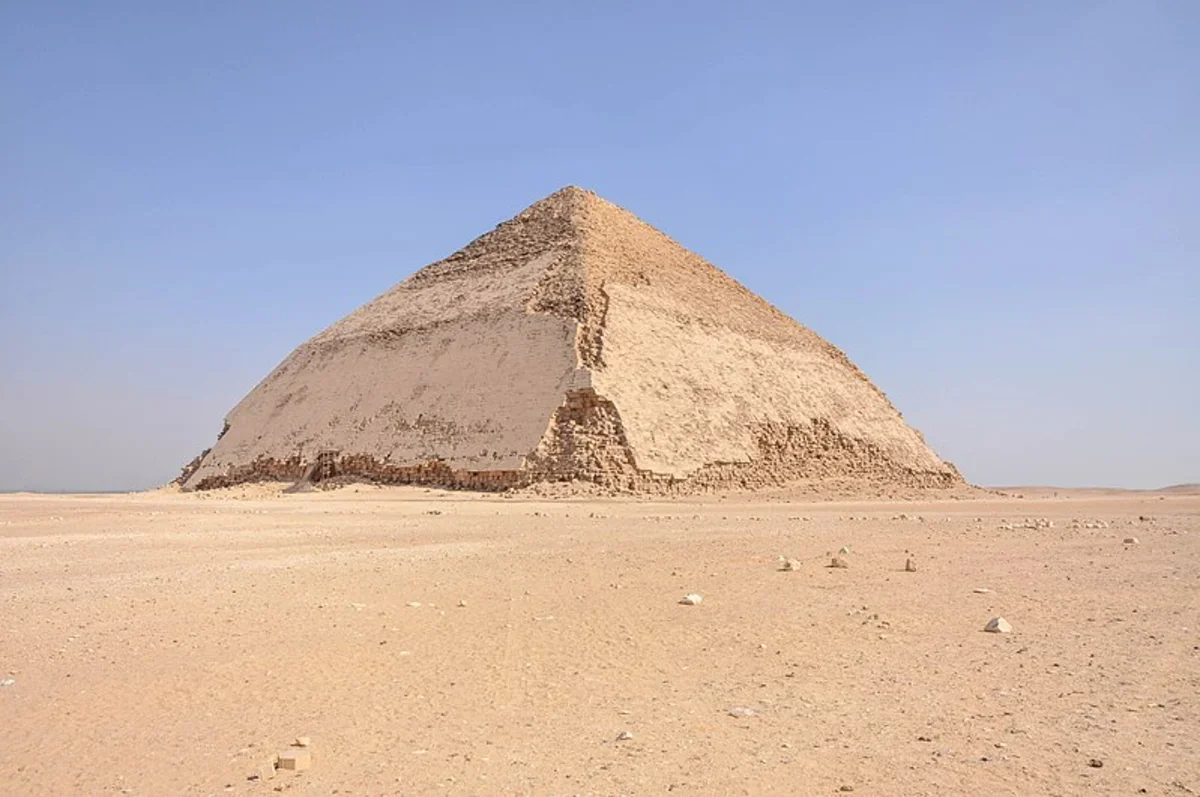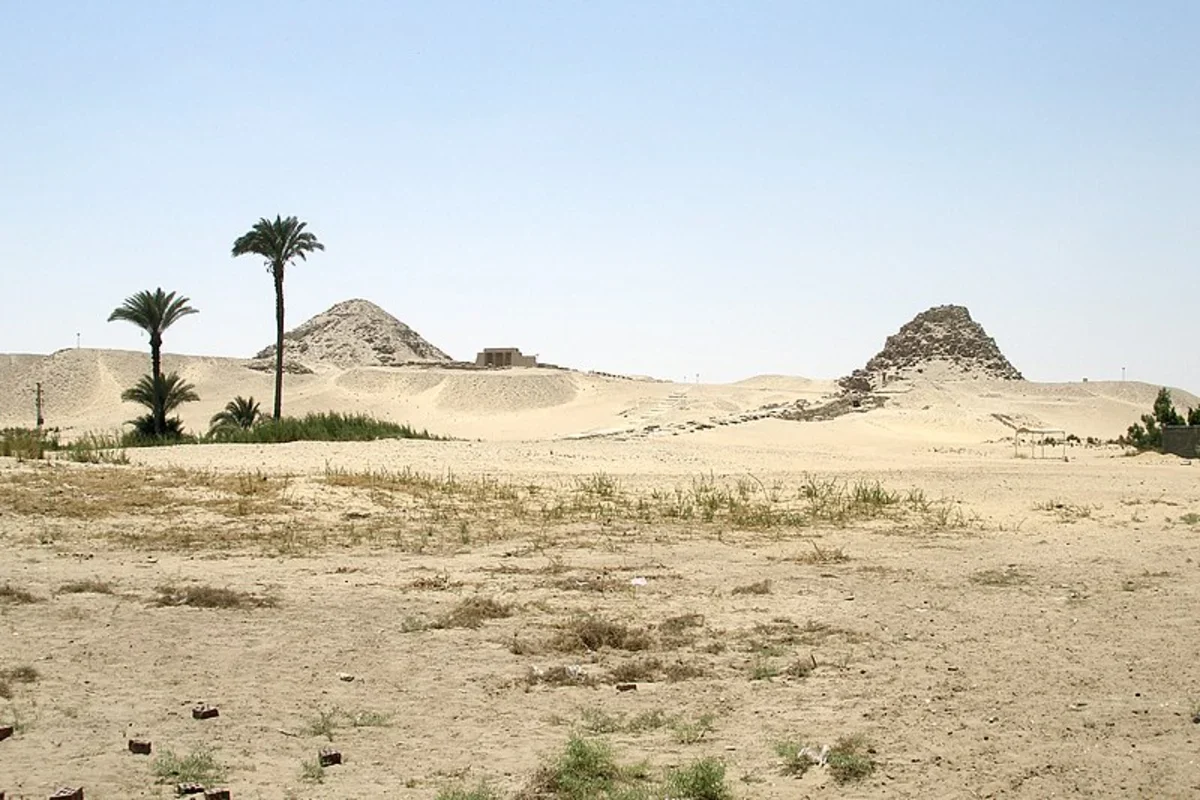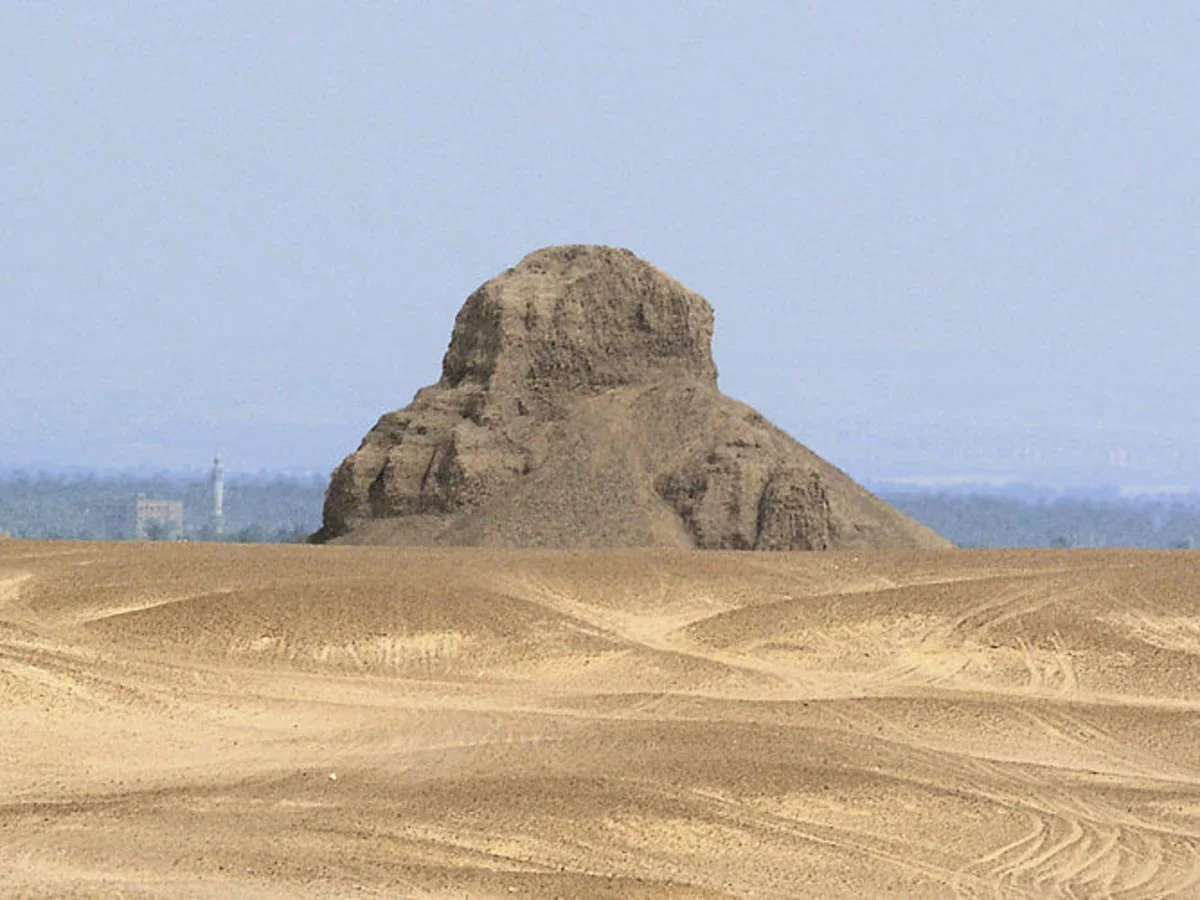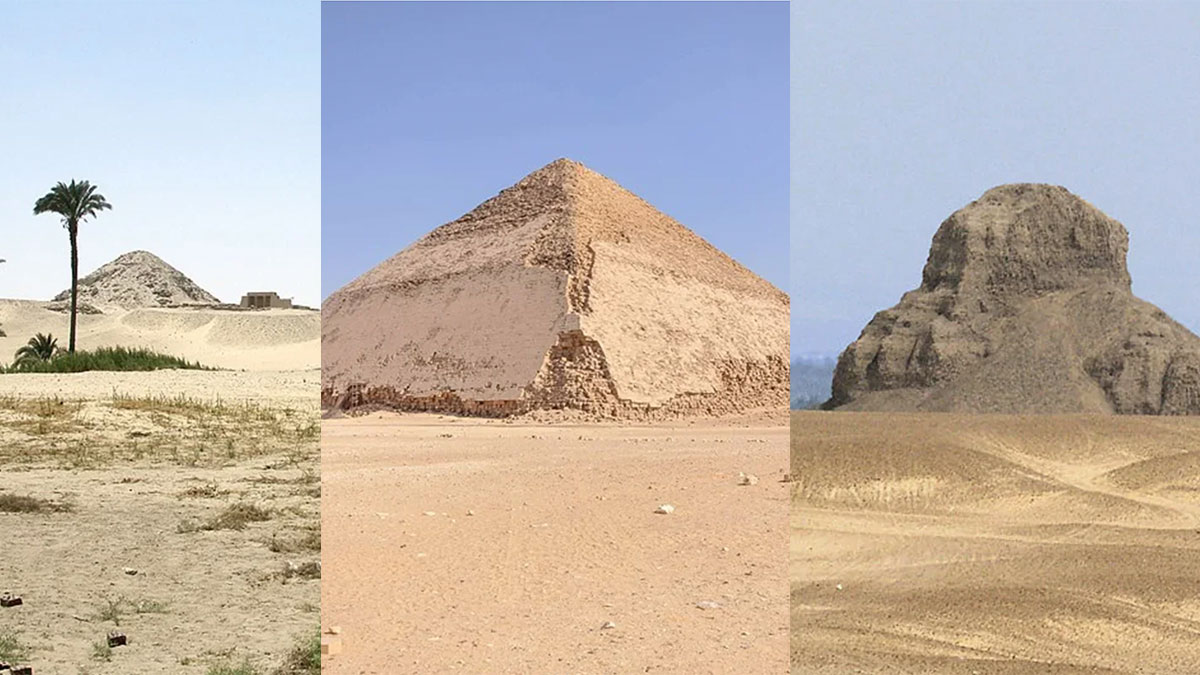The Great Pyramids of the Giza Plateau are among the most visited sites in Egypt. However, in this Arab country, archaeologists have counted more than 110 pyramids in varying states of preservation. We talk about seven of the most interesting of them, which remain in the shadow of their more famous “brothers”.
Step pyramid
The Pyramid of Djoser, better known as the step pyramid, is located in Saqqara, 30 km from Cairo. It is this 62.5-meter-high pyramid that is officially recognized as the oldest surviving pyramid in Egypt. It was built at the beginning of the Third Dynasty, during the reign of King Nejerikhet, known as Djoser, around 2667 BC.
The pyramid consists of six tiers, which gives it a characteristic stepped appearance. The six steps, according to historians, symbolize the path along which the pharaoh goes to the afterlife.
Pyramid of Unas
The dilapidated pyramid of the Fifth Dynasty pharaoh Unas is located between the two funerary complexes of Djoser and Sekhemkhet. This is the smallest of all the pyramids of the Old Kingdom (the original height is only 43 m). For comparison: the height of the Great Pyramid of Giza, or the Pyramid of Cheops, is 140 m.
Despite its modest size, the Pyramid of Unas occupies an important place in the history of Ancient Egypt. The earliest known funerary texts, called the Pyramid Texts, are inscribed on the walls of her burial chamber. These letters served as guides to the afterlife for the deceased pharaoh.
Bent pyramid

The Bent or Broken Pyramid at Dahshur is the first of three pyramids commissioned by Pharaoh Snefru, the first ruler of the Fourth Dynasty. The irregularly shaped pyramid got its name from the characteristic fracture of its edges at a height of 47 meters.
Typically, step pyramids had sloped sides of 72 to 78 degrees, but this site was originally built at a 55-degree angle, with the stones being laid sloping inward using the traditional method. However, something went wrong and the masonry became horizontal. As it turned out, this only increased the load on the structure and weakened its stability. Therefore, the degree of inclination had to be reduced even more: from 55 to 43.
Another feature of the pyramid is that archaeologists have found no traces of the presence of a sarcophagus in it, although the name of the pharaoh is written on the walls of the burial chamber inside the structure.
Red or pink pyramid
The red or pink pyramid is the third tallest pyramid in Egypt (104 m). At the time of its construction at the beginning of the 26th century BC, it was the tallest structure on Earth.
Also, the Red Pyramid, named because of the reddish-rusty hue of the stones, is considered the world’s first successful attempt at building a “true” isosceles pyramid, since it has a regular stereometric pyramidal shape.
Pyramid at Medum
The pyramid at Medum is located on the road to Faiyum, about 100 km south of Cairo. The pyramid was originally built in a stepped style with 7 rows. Its height was 65 m. But later it was rebuilt by Pharaoh Snefru into a “true” pyramid: an eighth step was added to it and the sides were made smooth.
Over time, its heavy outer cladding slid down and the walls collapsed, leaving a square, three-stage core on a mountain of sand and stones. Now only the highest three levels of the pyramid are visible, protruding from the sand.
Abusir pyramids

About 4.5 km south of Giza, in the ancient area of Abusir, are the pyramids of the Fifth Dynasty pharaohs. The Fifth Dynasty rulers chose this area because the Giza plateau was already occupied by pyramids.
The Abusir pyramids are not as majestic (the tallest is 51 m high) as their “brothers” in Giza: many buildings crumbled over time, as happened with the pyramids of the two kings Neferefre and Neferirkare. One of the reasons is short-lived building materials. If durable limestone was brought for the pyramids in Giza, then raw brick was partially used in Abusir.
Black Pyramid

The 75 m high Black Pyramid of Dahshur was built during the Middle Kingdom for Pharaoh Amenemhat III. It received its modern name because of the black rubble that forms the hill on which it rises. The Black Pyramid was the first tomb that was intended for both the pharaoh and his wife.
In ancient times, the pyramid was called “Amenemhet the Mighty,” which over time acquired an ironic connotation, since soon after construction the structure began to collapse.

